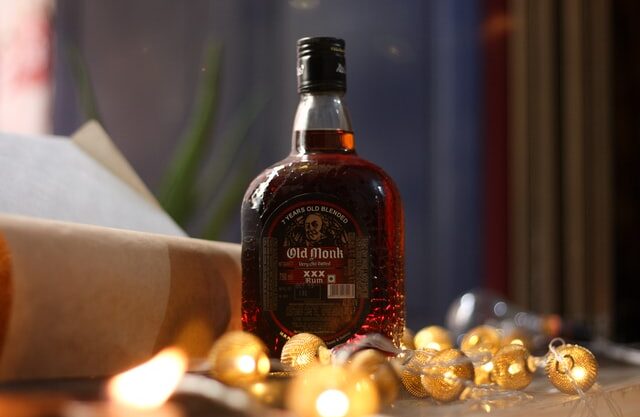The year was 1946. Product X transformed Procter & Gamble from a soap company to a global organization that would hinge its future on technology. Any guesses which product is being referred to?
Well, it is Tide, the world’s largest selling detergent brand with a market share of 14% in the global markets. Kyu, chaunk gaye na? Many people assume that Tide is an Indian brand, reflecting its high brand recall value.
Tide enjoyed blockbuster success upon its launch in the USA. It was a novel product based on synthetic compounds and not soap chemicals. It soon became one of the most profitable brands for P&G and turned the tide for them (pun intended).
Entry of Tide in India
As per a report Detergent market of India is expected to reach INR 49067 crore by the year 2025 registering a CAGR of more than 9%. The Indian Detergent market seems to grow at a healthy pace as the detergents have become a daily necessity especially in India, where laundry is an important household chore. The Indian Market is very different from the global detergent market. The Indian market is made of multiple foreign (Ariel, Tide) and indigenous brands (Nirma, Ghadi).
Tide evolved through multiple forms initially in the USA before entering India. In 1946, it was launched as a heavy-duty laundry detergent. In 1968, Tide’s formula was tweaked by adding enzymes, making it easier to clean carbohydrate and protein stains. Tide Liquid was introduced in 1984.
In the year 2000, Tide was launched in India. The FMCG market in India can be tricky due to the sheer cultural and economic diversity and the various nuances affecting consumer preferences. The ultimate goal of any detergent is the same, i.e., cleaning clothes. This makes it crucial for marketers to gauge the consumer psyche to ensure that a specific brand stands out amidst the market clutter to win the attention and loyalty of the consumers.
As of 2019, Tide has a market share of 13% in the Indian detergent space, placed third on the podium with market leaders Ghadi and Nirma. Tide has carved a space for itself in the mid-tier detergent segment appealing to the burgeoning middle-class of India. So, let us find what marketing strategy Tide used to achieve such a feat.
Tide’s Pentagonal Marketing Strategy for India

Target Audience:
The right message should reach the right people to make the desired impact. Most of the decisions regarding household products in India are mainly taken by women, considering they are the homemakers (in most cases). Identifying this, Tide has constantly made women the focal point of their advertising campaigns.
Owning a washing machine can still be a luxury in middle-class Indian households, making manual washing prevalent. In 2009, Tide introduced their new range of products Tide Naturals with lemon and sandalwood extracts which are less harsh on hands while washing clothes. This showed the consumers that the brand understood their pain points.
In 2017, Tide came up with the #CollarUpWithTideCampaign, conveying the message that dirty collars serving embarrassment are a thing of the past with the arrival of the New & Improved Tide Plus. Once again, realizing the influence of women as homemakers making their families look presentable, Tide promoted this campaign through actresses like Mouni Roy and Namrata Shirodkar.
Women in their roles either as mothers, wives, sisters, or working professionals are constantly striving to give their best and get that little extra goodness in the lives of their families. Tide launched the #TideGivesExtra campaign in 2018 to promote the New Tide Plus with Extra Power along these lines.
Thus, Tide has consciously maintained a deep connection with its target audience by showing that they care.
Premium yet Affordable:
Indian consumers aspire to buy top brands but are also pretty price sensitive. Tide was able to bridge this gap and find a perfect blend between the two conditions. On the one hand, it tackled the brand power of Surf Excel and sister-brand Ariel through pricing. On the other hand, it managed to compete against the lower-priced brands Ghadi and Wheel, courtesy of its international brand equity.
Attractive Packaging:
80% of millennials consider the packaging of FMCG products in the range of moderate to very important based on its impact on their purchasing decision. Tide has managed to grab the eyeballs due to its vibrant packaging. The iconic orange and yellow bulls-eye design was created by architect Donald Desky. At a time when most other detergent brands had sober-colored packaging, Tide’s colorful packaging stood out.
Offering Solutions:
Great brands offer simple solutions to problems faced by consumers. The color white has an important place in India’s history, forming a part of the tricolor, symbolizing peace and purity. Tide has constantly promoted itself as a detergent that maintains the whiteness of clothes.
India with its unique topographical features creates natural factors like humidity and dust, making clothes dirty pretty quickly. Tide recognized this problem and has created multiple campaigns focused on effective cleaning without affecting the quality of the fabric.
For instance, Tide launched the #TideWhite campaign on India’s Independence Day in 2018, celebrating various moments which made India proud.
Clever Advertising:
Tide has regularly come up with campaigns and taglines which have resonated with the public and given the brand a great recall value. “Chaunk Gaye”, “Tide hai, toh white hai”, “Tide Plus, jo de White Plus” are some of the iconic taglines which have become a part of advertising folklore.
Blending humor with everyday situations faced by the common man, Tide has created a high RQ i.e., relatability quotient in the market. Campaigns like #TideWhite, #TideUltra, #TideGivesExtra, and #CollarUpWithTide have struck a chord with the public and enhanced the emotional engagement of the brand.
Recent Developments
As part of its brand marketing strategy, Tide has roped in Ayushmann Khurrana as its brand ambassador for Indian market. The actor who has been riding on a massive wave of success is known for his relatable roles that mesh entertainment with a strong social message. Tide hopes to build on qualities like an earthy connection with the masses, wittiness, and a charismatic attitude that the actor possesses to engage a wider audience.
With the advent of the pandemic and lockdown, many people started to indulge in household chores, albeit forcibly. Tide grabbed this opportunity to introduce Tide Pods in India. Pods are advertised as a 3-in-1 capsule that comprises three different concentrated liquid detergents to ensure whiteness, stain removal, and brightness. They eliminate the hassle of measuring doses and spills due to manual pouring.
The question is whether the price-sensitive Indian consumers will choose convenience over price and opt for pods. A detergent would cost Rs 5-7 per wash, whereas using pods would escalate the cost to Rs 22, questioning the price-value equation of the pods.
Tide launched the #AngelsInWhite campaign to salute the healthcare professionals who continue to make invaluable contributions to society in the war against COVID-19. The campaign has generated over 10 million views on YouTube and once again established Tide’s connection with “whiteness”, symbolizing purity and unity.
The Way Ahead: Challenges and Opportunities
The primary challenge faced by Tide is the competition from market leaders Ghadi and Nirma, which play in the popular segment. These brands enjoy a strong mass appeal across the country due to aggressive pricing, higher margins paid to the suppliers, and a strong focus on the regional market.
The USP of Tide has been its ability to evolve with time and come up with new products that satisfy consumer needs. With the launch of Tide Pods, the brand is showing its willingness to experiment in the Indian market with products focused on convenience first and cost later.
Tide Eco-Box is another such opportunity for the brand. The Eco-Box was launched in the USA in 2019 to simplify product deliveries to consumers in the e-commerce space. The box consists of a sealed bag of liquid detergent, an easy-pour tap, and a measuring cup. A compact and lightweight design coupled with minimal packaging make this product a win-win for consumers and suppliers.
For over two decades now, Tide has created a strong brand resonance in the Indian market. Tide has managed to do so by catering to consumer needs through constant product evolution and creative marketing and advertising strategy. It would be intriguing to see the kind of tweaks it makes in its approach to sustain a leadership position in the Indian market in the coming years.
-AMAZONPOLLY-ONLYWORDS-START-
Also, check out our most loved stories below

Why did Michelin, a tire company, decide to rate restaurants?
Is ‘Michelin Star’ by the same Michelin that sells tires, yes, it is! But Why? How a tire company evaluations became most coveted in the culinary industry?

Bajaj Auto: The Story of an Indian Born Global Brand
Bajaj Auto has evolved tremendously over time from its traditional scooter Chetak to having the trendiest bike Pulsar. It has managed to stay relevant.

Jio’s Offensive Marketing Warfare: From Challenger to Leader
In just 4 years Reliance Jio has become the Indian telecom market leader due to its marketing warfare strategies. What is this strategy and how Jio used it?

Johnnie Walker – The legend that keeps walking!
Johnnie Walker is a 200 years old brand but it is still going strong with its marketing strategies and bold attitude to challenge the conventional norms.

Flipsters: Creating the Butterfly effect in Indian Startup Ecosystem
How is it that ex-Flipkart employees or Flipsters as they call themselves have achieved such massive success in the Indian Startup Ecosystem?

Nike doesn’t sell shoes. It sells an idea!!
Nike has built one of the most powerful brands in the world through its benefit based marketing strategy. What is this strategy and how Nike has used it?

Domino’s is not a pizza delivery company. What is it then?
How one step towards digital transformation completely changed the brand perception of Domino’s from a pizza delivery company to a technology company?

Why Indians love Old Monk? What is the revival plan of the dying brand?
Indians especially armed forces and college students for generations have loved Old Monk. What makes this rum so special? It’s classy, dark yet affordable.

IKEA- The new master of Glocalization in India?
IKEA is a global giant. But for India, the brand modified its business strategies. The adaptation strategy by a global brand is called Glocalization
-AMAZONPOLLY-ONLYWORDS-END-

















